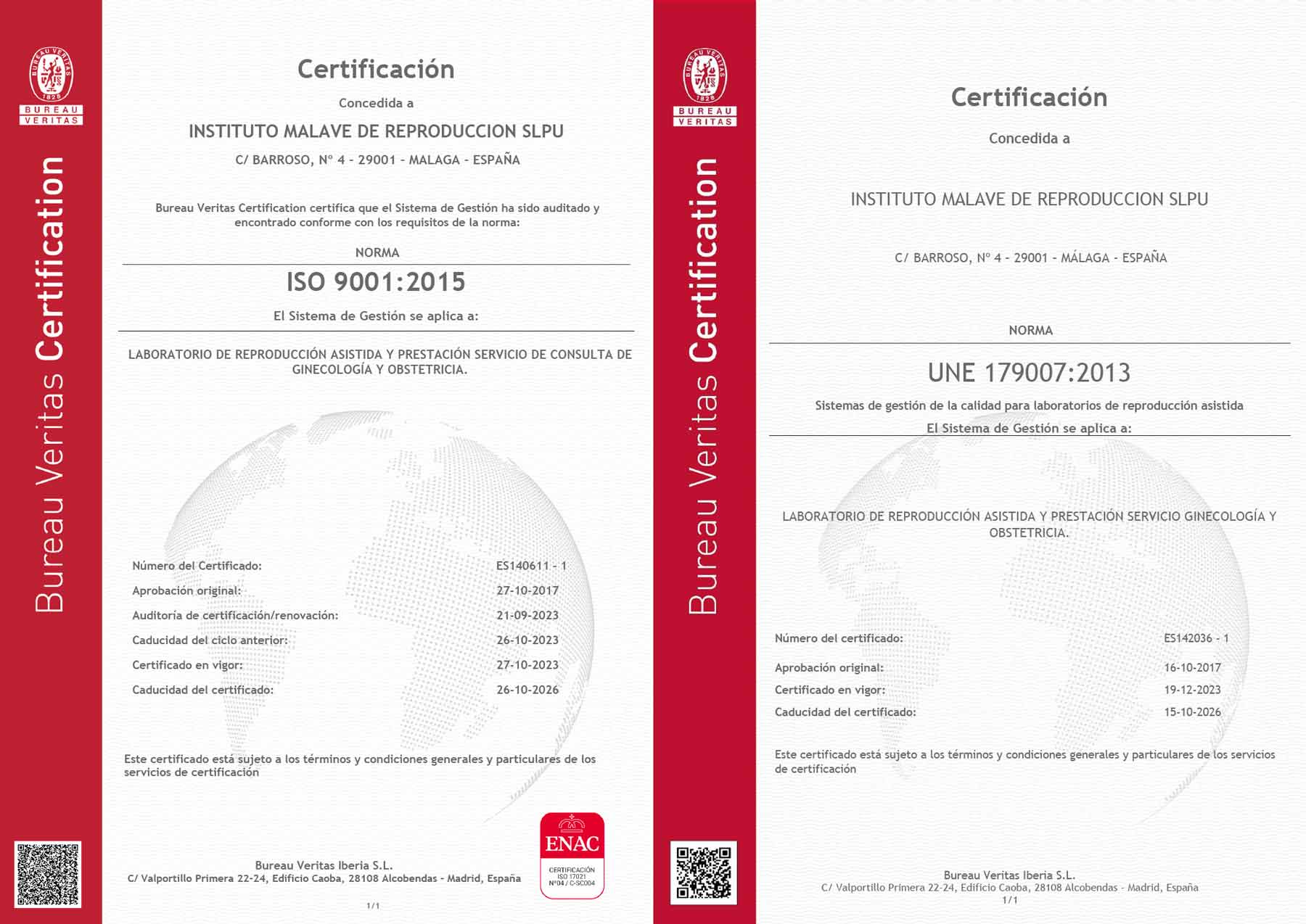Embryo vitrification
Assisted Reproduction:
Description and indications
Sometimes, after an in vitro fertilisation process, in addition to the embryos selected for transfer, patients obtain embryos suitable for preservation by vitrification, taking into account that only those with biological viability characteristics will be vitrified.
The fundamental advantage of cryopreservation is that it increases the chances of obtaining a pregnancy in a single cycle of in vitro fertilisation, since if the patient does not become pregnant after the first transfer, the devitrified embryos can be transferred and the chances of pregnancy can be restored without the need to go through the more complex stages of the technique.
On certain occasions, all the good quality embryos from that cycle can be vitrified, without performing a fresh transfer. This is done when:
- There is a clear risk of ovarian hyperstimulation where pregnancy could aggravate the course of the syndrome.
- It is observed that the endometrium is not sufficiently receptive.
Devitrified embryos do not decrease their implantation capacity, so there is no decrease in the possibility of pregnancy. This is due to the fact that after devitrification, the rate of intact embryos is as high as 95%.
Vitrification is a useful tool in cases where the number of embryos obtained is high.
The implantation rate and clinical results with vitrified embryos are comparable to those achieved with fresh embryos, which can be explained by the fact that after vitrification the rate of intact, i.e. undamaged, embryos is very high, up to 95%.
This is a recommended option for patients at risk of Ovarian Hyperstimulation Syndrome (OHSS), endometrial damage, or for women who need Preimplantational Genetic Diagnosis (PGD) to determine the genetic and chromosomal normality or abnormality of their embryos, as in the latter case it is often necessary to vitrify the embryos while awaiting the genetic result.
The best embryos are selected for transfer. The rest are vitrified and can be used in a subsequent cycle if the patient has not achieved gestation in the first transfer.
In exceptional cases, not only untransferred embryos are vitrified, but all embryos are vitrified. This is carried out when it is not advisable to transfer any embryos to the mother in that particular cycle, because there is, for example, a clear risk of severe ovarian hyperstimulation (a possible pregnancy could aggravate the evolution of the syndrome) or simply because it is observed that the endometrium is not sufficiently receptive at that particular moment (because the patient has bled before the day of the transfer or because the thickness or characteristics of the endometrium are inadequate).
Finally, there are another series of much less frequent conditions that we could also include in this section, such as those cases in which the patient has endometrial polyps that could hinder implantation, or patients who must undergo chemotherapy or radiotherapy. In all these cases the transfer is delayed for the necessary time and the embryos are vitrified and kept until it is confirmed that the endometrial conditions are the most suitable to receive the embryos.

